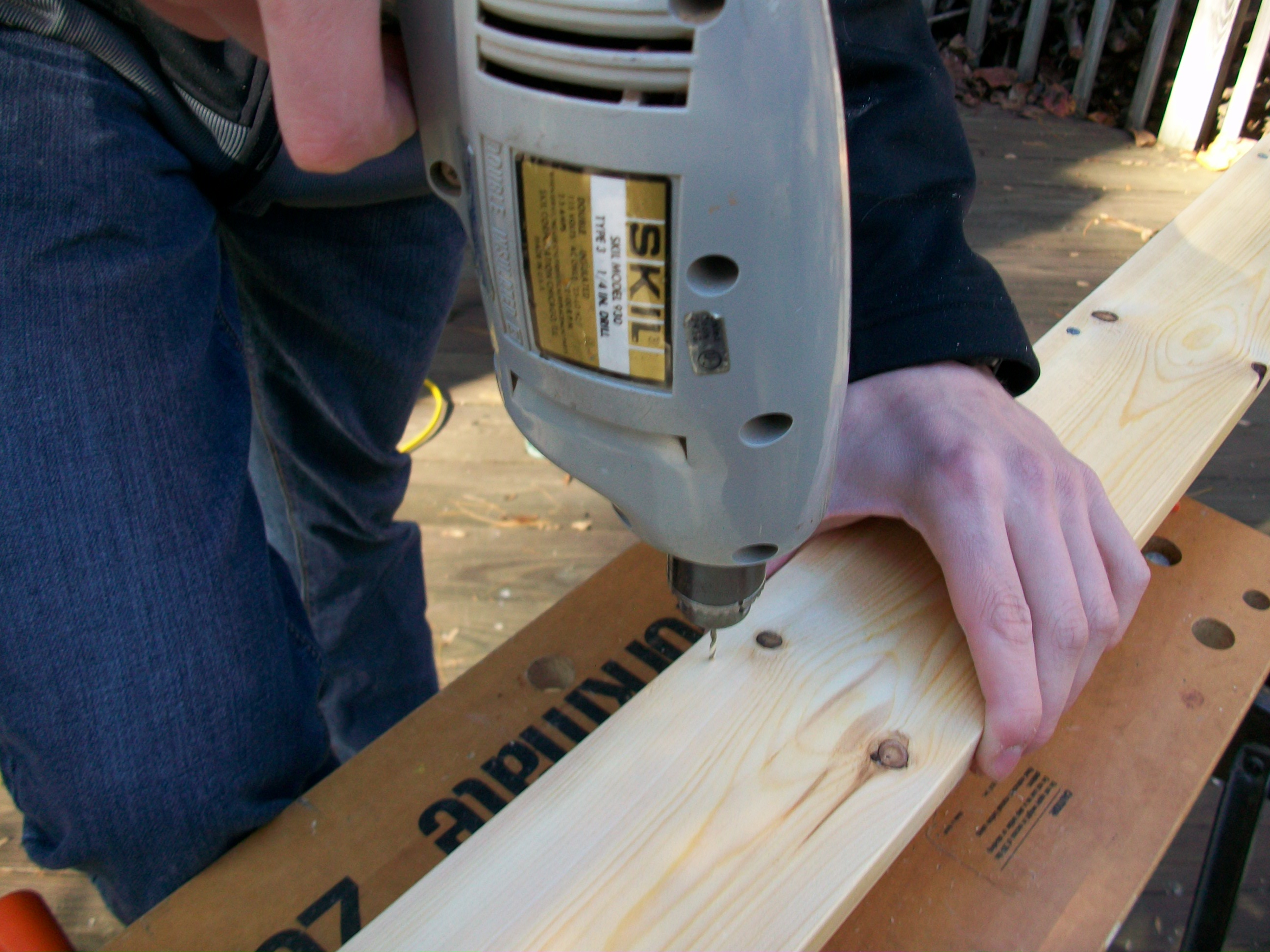pilot hole on:
[Wikipedia]
[Google]
[Amazon]
 In
In
/ref> A hole drilled for tapping machine screws or bolt threads in metal or plastic may also be referred to as a pilot hole.
The influence of pilot hole diameter on screw pullout resistance
Recommended Pilot Hole Sizes in Metal, Inch and Metric
SAE Standard J635 Fan Hub Bolt Circles and Pilot Holes
Hole making
 In
In construction
Construction is a general term meaning the art and science to form objects, systems, or organizations,"Construction" def. 1.a. 1.b. and 1.c. ''Oxford English Dictionary'' Second Edition on CD-ROM (v. 4.0) Oxford University Press 2009 and ...
, a pilot hole is a small hole drilled into a piece of construction material. Its purpose may be:
#to guide a larger drill to the appropriate location and ease the job of the larger drill
#allow for the insertion of another hole-making tool, such as a knockout punch
In metalworking, a knockout punch, also known as a chassis punch, panel punch, Greenlee punch, or a Q-max, is a hand tool used to punch a hole through sheet metal. It is a very simple tool that consists of a punch, die, and screw. There are ...
, that will produce the final-sized hole, or
#locate, guide, and provide clearance for a self-threading screw in wood or plastic to prevent damaging the material or breaking the screw.
Pilot for large holes
A pilot hole may be drilled the full extent of the final hole, or may only be a portion of the final depth. The pilot drill may be a standard twist drill, another type ofdrill bit
Drill bits are cutting tools used in a drill to remove material to create holes, almost always of circular cross-section. Drill bits come in many sizes and shapes and can create different kinds of holes in many different materials. In order ...
appropriate for the material, or, when the primary purpose is precisely locating a hole, may be made with a short, stiff center drill.
The pilot hole also reduces the power needed to turn a large drill bit, and reduces the large bit breakage risk. For twist drill bits, the pilot size is usually selected so that the chisel point of the larger drill does not need to remove any material, which reduces the chance of splitting the web of the bit. A pilot thus sized also prevents a larger drill bit from slipping on the material and guides the larger bit effectively. Very large holes may be stepped by drilling successively larger pilot holes before the final size drill is used.
On harder materials, such as most metals and many plastics, and sometimes on softer materials like wood, a center punch is used before drilling the pilot hole to ensure that the smaller pilot drill bit does not slip and that it starts at the correct location.
Pilot holes for screws
Pilot holes may be used when driving ascrew
A screw and a bolt (see '' Differentiation between bolt and screw'' below) are similar types of fastener typically made of metal and characterized by a helical ridge, called a ''male thread'' (external thread). Screws and bolts are used to fa ...
, typically in wood
Wood is a porous and fibrous structural tissue found in the stems and roots of trees and other woody plants. It is an organic materiala natural composite of cellulose fibers that are strong in tension and embedded in a matrix of ligni ...
, concrete
Concrete is a composite material composed of fine and coarse aggregate bonded together with a fluid cement (cement paste) that hardens (cures) over time. Concrete is the second-most-used substance in the world after water, and is the most ...
, or plastic
Plastics are a wide range of synthetic or semi-synthetic materials that use polymers as a main ingredient. Their plasticity makes it possible for plastics to be moulded, extruded or pressed into solid objects of various shapes. This adaptab ...
where the screw cuts its own threads.
When a screw is driven into a material without a pilot hole, it can act as a wedge, generating outward pressure which can cause many materials to split. By drilling a small pilot hole into the material, into which a screw is then driven, less wedging takes place, thereby reducing the likelihood of the material being split.
When a screw is driven without a pilot hole, or with too small a pilot hole, the core of the screw may bind and lead to the screw being broken. The appropriate pilot hole will prevent binding while providing sufficient friction to keep the screw from loosening. For common wood screws, the pilot providing clearance for the core of the screw may be followed by a larger bit to shallower depth to provide clearance for the larger, unthreaded shank of the screw. For standard wood screws, special pilot drill bits are manufactured to produce the correct hole profile in a single operation, rather than needing several different drill bit sizes and depths.
Screws driven into concrete must have the appropriate size pilot hole, or they will either break on insertion, strip the hole, or not provide the rated holding force.TAPCON reference material retrieved 2013AUG9/ref> A hole drilled for tapping machine screws or bolt threads in metal or plastic may also be referred to as a pilot hole.
References
External links
{{Wiktionary, pilot holeThe influence of pilot hole diameter on screw pullout resistance
Recommended Pilot Hole Sizes in Metal, Inch and Metric
SAE Standard J635 Fan Hub Bolt Circles and Pilot Holes
Hole making